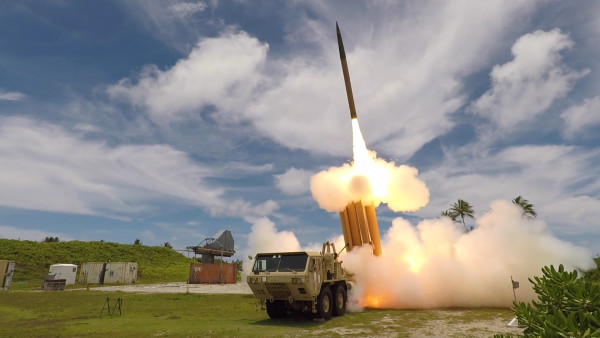

The Pentagon is sending additional missile systems to the Middle East, and repositioning one of the recently deployed carrier strike groups in the area. The decision, announced this weekend by Defense Secretary Lloyd Austin, comes two weeks after the Oct. 7 terror attacks in Israel by Hamas and days after small-scale drone attacks on American positions in the region.
Austin announced a series of decisions meant to bolster the American presence in the Middle East. The biggest is shifting the USS Dwight D. Eisenhower Carrier Strike Group to the Middle East. The group, comprising the carrier and its aircraft wing as well three destroyers, was sent to the eastern Mediterranean Sea on Oct. 14. This puts a carrier strike group on either side of the Middle East, as the USS Gerald R. Ford Carrier Strike Group remains in the eastern Mediterranean.
Meanwhile the Pentagon is sending a Terminal High Altitude Area Defense or THAAD battery to the Middle East, along with several more Patriot missile battalions. The exact amount of missile systems being sent are unclear, and their destinations were also not disclosed.
Subscribe to Task & Purpose Today. Get the latest military news and culture in your inbox daily.
Finally, Austin said that an unclear amount of “additional troops” were given prepare-to-deploy orders. The Pentagon has already placed some 2,000 troops in a state of “heightened readiness” last week; so far they have not been deployed.
The decision, Austin said, comes in response to “recent escalations by Iran and its proxy forces across the Middle East Region.”
“These steps will bolster regional deterrence efforts, increase force protection for U.S. forces in the region, and assist in the defense of Israel,” Austin said in his statement.
A series of rocket and drone attacks were carried out on American bases in Iraq and Syria, including Iraqi Kurdistan. The attacks did not directly kill anyone; a civilian contractor working for the U.S. military died from a “cardiac episode” caused by the stress of the attack. Meanwhile the USS guided-missile destroyer USS Carney intercepted several drones and cruise missiles above the Red Sea over nine hours soon after crossing into the Red Sea via the Suez Canal. The Pentagon said that the munitions and drones were launched by Houthi rebels in Yemen.
The latest spate of violence in the Middle East started on Oct. 7 when Hamas launched a large-scale terror attack inside Israel. Since then Israel has launched major air strikes inside the Gaza Strip. In total, more than 5,700 people have died in Israel and the occupied Palestinian territories over the last two weeks. Fighting has spread to southern Lebanon as well, as Hezbollah and Israel have traded rocket and artillery fire. Iran backs Hezbollah and the Houthis;
Iran does support Hamas, but there has not been any hard evidence suggesting direct Iranian involvement in the Oct. 7 attacks.
Austin did not rule out more measures in the near future, adding that he would “consider deploying additional capabilities as necessary.”
The latest on Task & Purpose
- Navy fires captain of guided-missile cruiser USS Lake Erie
- The M10 Booker Combat Vehicle is definitely a tank, says Gen. Abrams
- Why Navy SEALs wear a trident and other facts about life as a frogman
- A-10 Warthogs arrive, more U.S. forces coming amid Israel-Gaza fighting
- Army plans to cut ‘unnecessary maintenance’ on vehicles and weapons